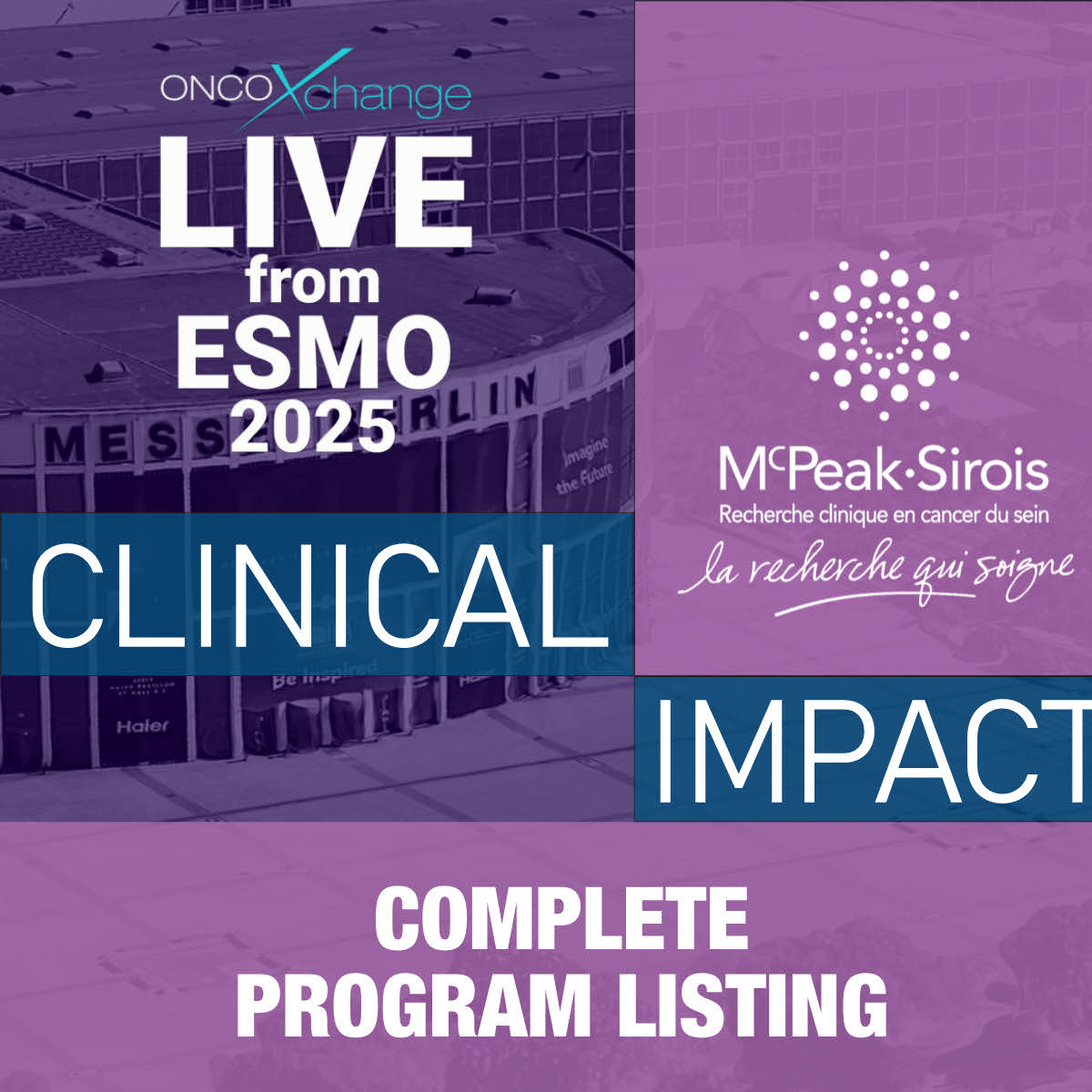
Breast Cancer Index identifies HR-positive breast cancer patients most likely to respond to extended endocrine therapy
June 2019
By Wayne Kuznar for oncoXchange
The Breast Cancer Index (BCI) predicts response to extended endocrine therapy and identifies a subset of patients with hormone receptor (HR)-positive, node-positive breast cancer with significant benefit from 10 years versus 5 years of tamoxifen therapy.
Data from a translational study of patients from the aTTom study “establish level 1B evidence for BCI as a predictive biomarker of benefit from extended endocrine therapy and outcome,” said John Bartlett, PhD, at the 2019 ASCO annual meeting.
Multiple trials have shown a consistent but modest benefit with extended endocrine therapy (7 to 10 years), with about a 2 to 5% reduction in absolute risk, in patients with HR-positive breast cancer. Extended endocrine therapy, however, is associated with tolerability issues, discontinuations due to adverse effects, and serious adverse events, including thromboembolic events and uterine carcinoma with the use of tamoxifen, and bone-related side effects with the use of aromatase inhibitors.
The BCI is an 11 gene expression-based signature that consists of two functional domains. The first is a proliferative index using five genes that measure tumor proliferation status, checkpoints, and spindle formation. The second measures the strength of endocrine signaling within cancers by measuring the HOXB13 to IL-17B (H/I) ratio.
Several studies have shown that the BCI H/I Index predicts endocrine response across several treatment backgrounds, with a significant treatment biomarker interaction.
In the Translational aTTom (Trans-aTTom) study presented here, Dr. Bartlett and colleagues further examined the predictive performance of the BCI H/I Index in the extended endocrine therapy setting using patients treated in the aTTom study, a prospective phase III trial that randomized 6,953 HR-positive women to stop or continue tamoxifen for 5 more years after completing at least 4 years of prior tamoxifen.
In the aTTOM parent study, at a median of 9 years of follow-up, there were fewer breast cancer recurrences and a reduction in breast cancer mortality but an increased incidence of endometrial cancer with longer tamoxifen use.
For Trans-aTTom, 1,822 HR-positive patients had BCI results available, 1,018 with node-negative disease and 583 with node-positive breast cancer. Dr. Bartlett’s data presentation focused on the node-positive cohort. There were no significant differences in patient characteristics between the node-positive cohorts in aTTom and Trans-aTTom.
Extended endocrine therapy benefit was observed in all node-positive patients in Trans-aTTom (HR 0.88; 95% CI 0.65-1.18), consistent with the overall aTTom node-positive cohort (HR 0.86). The HR for extended (10 vs. 5 years) endocrine therapy benefit in the 296 node-positive patients in Trans-aTTom categorized as BCI H/I low was 1.07 (0.69-1.65). In the 287 node-positive patients classified as BCI H/I high, the HR for extended benefit was a significant 0.35 (95% CI 0.15-0.86), representing a 65% relative reduction in the risk of an event.
The absolute risk of recurrence with extended endocrine therapy was not reduced in the BCI low cohort (-0.2%, P=0.768) whereas the absolute risk was reduced by a significant 10.2% (P=0.027) in the BCI high subgroup, said Dr. Bartlett, program director, Diagnostic Development at the Ontario Institute for Cancer Research, Toronto, Ontario, Canada.
When examined as a continuous variable “for those patients who have only 5 years of extended endocrine therapy, there’s an increasing risk of recurrence as the BCI H/I score increases, whereas for those patients receiving 10 years of therapy, the curve is relatively flat,” he said. This interaction was significant (P=0.01), adjusting for age, tumor size, grade and estrogen receptor and progesterone receptor status.
The data are consistent with a previous analysis of the effect of BCI status as a predictive biomarker for extended endocrine therapy versus placebo in the MA.17 trial, which also found a significant interaction (P=0.03), and for adjuvant tamoxifen versus no tamoxifen (P=0.003), he noted.
Bartlett reports financial relationships with Oncology Education, BioNTech AG, bioTheranostics, Insight Genetics, Pfizer, RNA Diagnostics, Genoptix, MammaPrint, NanoString Technologies, Stratifyer GmbH, and Thermo Fisher Scientific.

Comments (0)